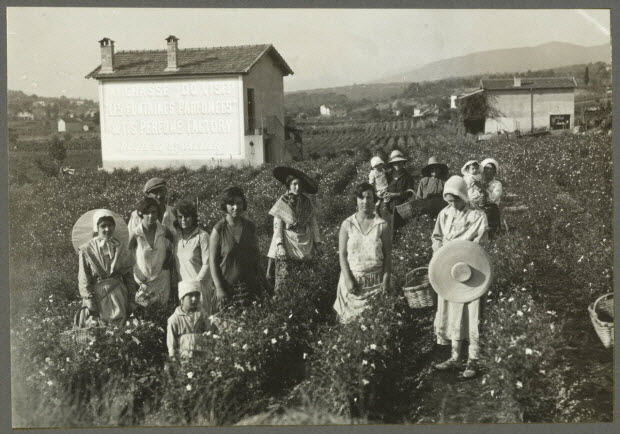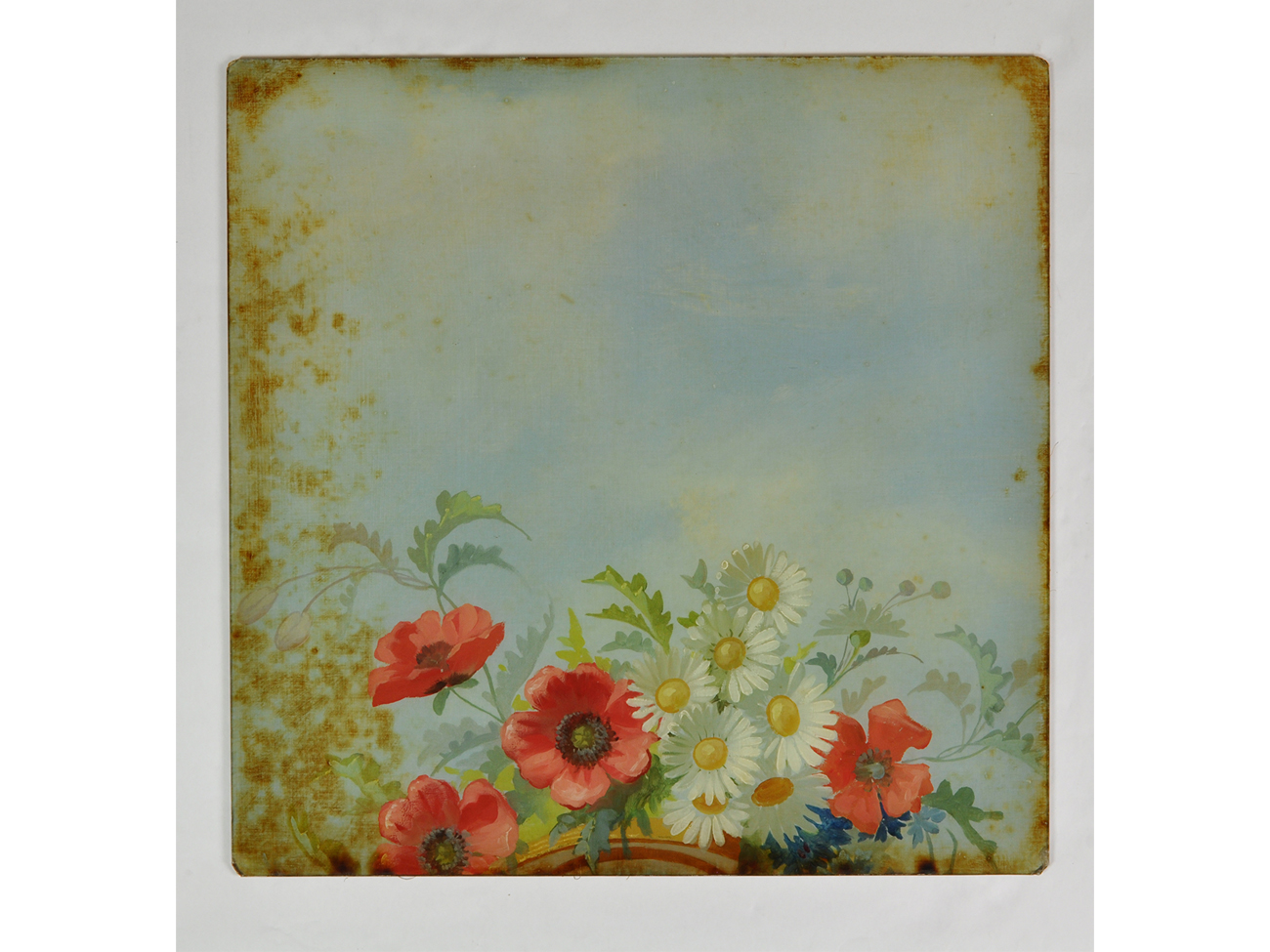Flora from A to Z
An abecedary of the collections
Mucem, fort Saint-Jean—
Salle des collections
|
From Monday 29 June 2020 to Monday 11 January 2021
A for “acanthe” (acanthus), B for “badiane” (star anise), C for “chardon” (thistle), D for “dahlia” (dahlia), ... To celebrate the arrival of Spring, the exhibition “Flora from A to Z” presents a floral abecedary in 26 letters, sourced from the collections of the Mucem.
“Flowers are everywhere for those who truly want to see them,” said Henri Matisse. We are surrounded by flora – and not only in our gardens and the countryside: it has always been an inexhaustible source of inspiration for folk and decorative arts. Both wild and cultivated flowers are also called upon for other uses, such as pharmacopoeia, perfumery, food, and crafts. And if we have sometimes forged special cultural relationships with certain plants to which we attribute symbolic, magical, or religious dimensions, the disappearance of wildflowers, such as the iconic poppy, has also made us aware of how fragile nature is.
This abecedary, which gives pride of place to Mediterranean plants, also invites us to explore and rediscover the jardin des Migrations at the nearby fort Saint-Jean – a delight that is in full bloom. So, say it with flowers!
—Curation : Françoise Dallemagne, collections and research officer at the Mucem
—Scenography: Géraldine Fohr
- The Collections Room
-
Since February 2018, the Mucem has dedicated a space for displaying its collections: located at the fort Saint-Jean, the Collections Room is a fun way to find out about the museum’s collections via thematic exhibitions presented in the form of abecedaries, which are changed every six months.
This innovative approach allows the general public to become aware of the diversity of the Mucem’s collections, which include over 350,000 preserved objects, themselves part of a set of a million-plus items: what do they tell us about our societies, passions, fears, and beliefs? The great variety of the Mucem’s collections allow us to explore different themes from A to Z.
After “Love from A to Z” (February - October 2018), “Animals from A to Z” (October 2018 - March 2019), “Reliquaries from A to Z” (April 2019 - September 2019), and “Chance from A to Z” (October 2019 - March 2020), the Collections Room hosts the exhibition “Flora from A to Z” from 25 March to 30 August 2020. It will then be followed in the autumn by the exhibition “Comic strips from A to Z”.
- Curation
-
After gaining a degree in History of Art and Medieval Archaeology, in 2003 Françoise Dallemagne joined the Mucem, as how the museum was then, and collaborated on several exhibitions presented at the fort Saint-Jean, including “Between land and sea. Flat Stones” and “Dreaming of Christmas. Creating a nativity scene in Europe”. In 2014, she was associate curator of the exhibition on carnivals, “The World Upside Down”. Also, as collections and research officer, she participated on ethnological surveys conducted by the Mucem on carnivals and the revival of traditional jewellery in the Mediterranean.
Hobbies: gardening and amateur plant collecting.
-
Interview with Françoise Dallemagne, exhibition curator
-
Mucem (M.) Why has the Mucem chosen to focus on the theme of flora for this new exhibition in the form of an abecedary?
Françoise Dallemagne (F.D.) After an abecedary on wildlife (”Animals from A to Z”), the theme of flora came quite naturally as a subject of an exhibition presented in a space dedicated to the museum’s collections. The natural world that surrounds us and how to protect it are indeed questions of our contemporary society that preoccupy all of us. And museums are in tune with this, as shown by the exhibition “Gardens” at the Grand Palais in 2017, the exhibition “We the Trees” at the Fondation Cartier, and work by the artist Jean-Michel Othoniel. He created a marvellous herbarium from flowers in the paintings in the Louvre, which revealed their symbolic character, and also created the installation, La Rose du Louvre. Not only are flowers a pleasure for the senses, but we can also find a use for each of them – crafts, pharmacology, food, and magic. This allows us to unmask them through certain objects in the Mucem’s collections.
M. What discoveries surprised you most during your research for this exhibition?
F.D. As Henri Matisse used to say, let flowers be everywhere; visible in the scrolls of an Azulejo ceramic tile or on the front of a Parisian bakery, yet also hidden behind the scent of a perfume, the making of a fabric, or the scarlet hue of Zouave trousers. The very name of certain flowers, whether in Latin or the vernacular, sometimes evokes uses we put them to or benefits we ascribe to them. Rosehip, for instance, whose Latin name Rosa canina (”dog rose”) evokes the plant’s supposed properties for curing rabies. Finally, some flowers, such as the emblematic tulip, have an extraordinary history, worthy of that of the greatest of travellers.
M. Within this selection, which are the most remarkable flowers (and objects)?
F.D. I have a soft spot for the tulip, as I just explained, which is the only flower that can boast of having caused a financial crisis in the Netherlands in the 17th century; thereafter, a genuine “tulipomania” throughout Europe in the 18th century; and which even has its own museum (the Tulip Museum in Amsterdam). But also for the crocus of the iris family, whose stigmata give us saffron and whose flowers are beautifully embroidered in a stylised manner on the Sardinian apron of Orgosolo, which is displayed in the exhibition. In Sardinia, embroidery was one of the means of expression for local women. Through their embroidery, choice of braids, sizes, and positioning, they give us an idea of their maker’s personality: dreamy, passionate, freedom-loving or, on the contrary, serious. I am also quite moved by the jasmine flower from Grasse for its intoxicating scent and the beauty of its starry flowers; one must not forget the gruelling and necessarily meticulous manner with which they were collected using small baskets that hung at the waist. Finally, mention needs to be made of the enamelled stoneware signage made by the ceramist Alexandre Bigot, whose feminine face was framed with heliotropes, and which recalled the flower-women created by the Art Nouveau artist, Alfons Mucha.
Practical information
Free entry to exhibitions from 29 June to 20 July 2020 (booking not required)

